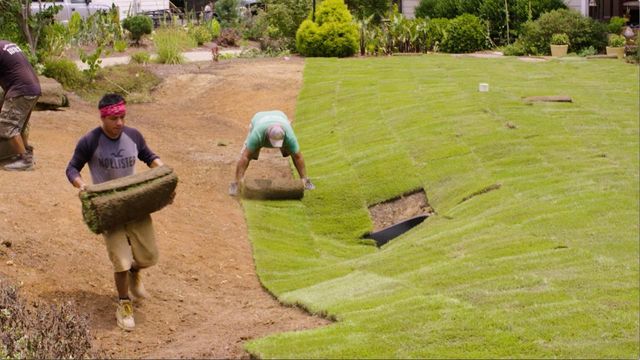4 ways to be the 'Sodfather' of your lawn
Make your lawn an offer it can't refuse. Build a fantastic lawn by following these four tips.
Posted — UpdatedNo matter the season, there are always things you can be doing to ensure your lawn looks its best year-round.
Make your lawn an offer it can't refuse and build a fantastic lawn by following these four tips.
According to the North Carolina Sod Producers Association, "Improper irrigation of lawns results in wasted water, added cost and unhealthy plants."
The NCSPA added, "Water should be applied only when a reasonable portion of the lawn shows signs of moisture stress. A dark bluish-gray color, footprints that remain some time after walking and wilted, folded or curled leaves are indications that it is time to water."
Avoid light and frequent watering sessions, because this will only encourage shallow rooting and increase the chance for disease and weeds.
Here are some other tips to keep in mind in regards to watering:
- Water in the early morning if possible. Watering when it is cool outside will prevent evaporation and disease potential.
- Apply approximately one to one-and-a-half inches of water per week. This will usually encourage deep rooting to a depth of six to eight inches.
- Use cans or a rain gauge to determine how much water is being delivered in a certain period of time. Space cans out and see how uniform your watering pattern is.
Whether you have a push, reel, or riding mower, the following tips will make your lawn life better.
- Keep the mower blades sharp and balanced. A clean cut will reduce disease potential and make it easier to mow, cutting back on the wear and tear of both you and the mower.
- Mow at the proper height. Find the height for your grass species in Turffiles.
- If possible, do not collect clippings, but rather let them return to the turf. There, they're able to decompose and release nutrients that can be reused by the grass plants. If you must collect clippings, put them in a compost pile rather than bagging them.
- Mow frequently to eliminate long clippings that would otherwise shade the grass. Doing so prevents an excessive buildup of lawn clippings.
Just like humans, grass plants need adequate nutrition to produce a healthy, dense and rigorous turf. Here are a few ways you can make sure your lawn is getting the care it needs:
- Every few years, obtain a soil sample to determine the amounts of lime, phosphorus and potassium needed by your established lawn.
- Visit Turffiles to see a fertilization calendar to help determine the amount of nitrogen to add, which does not appear in the soil test.
- Not meeting the needs of the turfgrass plant can result in weak, thin turf. Over-applying nutrients can make turf susceptible to disease and environmental stress.
If your lawn is a heavily trafficked area your soil will be prone to compaction. Compaction limits the amount of oxygen which is necessary for good root growth and healthy turf.
The best way to reduce compaction is to use an aerifier, which inserts a hollow metal tine or spoon into the soil, normally removing a soil core. For best results, aerify when the soil is moist and turf is actively growing.
Copyright 2024 by Capitol Broadcasting Company. All rights reserved. This material may not be published, broadcast, rewritten or redistributed.






